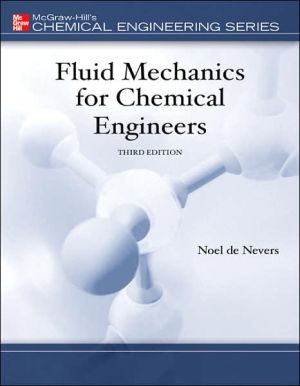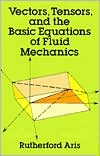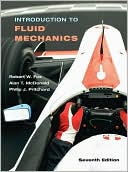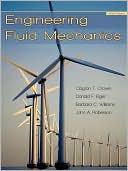Computational Fluid Dynamics in Fire Engineering: Theory, Modelling and Practice
Search in google:
Fire and combustion presents a significant engineering challenge to mechanical, civil and dedicated fire engineers, as well as specialists in the process and chemical, safety, buildings and structural fields. We are reminded of the tragic outcomes of ‘untenable’ fire disasters such as at King’s Cross underground station or Switzerland’s St Gotthard tunnel. In these and many other cases, computational fluid dynamics (CFD) is at the forefront of active research into unravelling the probable causes of fires and helping to design structures and systems to ensure that they are less likely in the future. Computational fluid dynamics (CFD) is routinely used as an analysis tool in fire and combustion engineering as it possesses the ability to handle the complex geometries and characteristics of combustion and fire. This book shows engineering students and professionals how to understand and use this powerful tool in the study of combustion processes, and in the engineering of safer or more fire resistant (or conversely, more fire-efficient) structures.No other book is dedicated to computer-based fire dynamics tools and systems. It is supported by a rigorous pedagogy, including worked examples to illustrate the capabilities of different models, an introduction to the essential aspects of fire physics, examination and self-test exercises, fully worked solutions and a suite of accompanying software for use in industry standard modeling systems.· Computational Fluid Dynamics (CFD) is widely used in engineering analysis; this is the only book dedicated to CFD modeling analysis in fire and combustion engineering· Strong pedagogic features mean this book can be used as a text for graduate level mechanical, civil, structural and fire engineering courses, while its coverage of the latest techniques and industry standard software make it an important reference for researchers and professional engineers in the mechanical and structural sectors, and by fire engineers, safety consultants and regulators· Strong author team (CUHK is a recognized centre of excellence in fire eng) deliver an expert package for students and professionals, showing both theory and applications. Accompanied by CFD modeling code and ready to use simulations to run in industry-standard ANSYS-CFX and Fluent software.
Preface xi1 Introduction 11.1 Historical Development of Fire Modeling 11.2 Overview of Current Trends in Fire Modeling 41.3 Review of Major Fire Disasters and Impact on Fire Modeling 111.3.1 Kings Cross Fire 111.3.2 World Trade Center Fire 121.4 Application of Fire Dynamics Tools in Practice 171.5 Validation and Verification of Fire Dynamics Tools 231.6 Scope of the Book 26Review Questions 282 Field Modeling Approach 29Part I Mathematical Equations2.1 Computational Fluid Dynamics: Brief Introduction 292.2 Computational Fluid Dynamics in Field Modeling 312.3 Equation of State 352.4 Equations of Motion 372.4.1 Continuity Equation 382.4.2 Momentum Equation 402.4.3 Energy Equation 462.4.4 Scalar Equation 502.5 Differential and Integral Forms of the Transport Equations 522.6 Physical Interpretation of Boundary Conditions for Field Modeling 572.7 Numerical Approximations of Transport Equations for Field Modeling 592.7.1 Discretisation Methods 612.7.1.1 Steady Flows 612.7.1.2 Unsteady Flows 692.7.2 Solution algorithms 712.7.2.1 Matrix Solvers 712.7.2.2 Pressure-Velocity Linkage Methods 742.7.3 Boundary Conditions 812.8 Summary 83Part II Turbulence2.9 What Is Turbulence? 852.10 Overview of Turbulence Modeling Approaches 862.11 Additional Equations for Turbulent Flow-Standard $$ Turbulence Model 902.12 Other Turbulence Models 932.12.1 Variant of Standard $$ Turbulence Models 962.12.2 Reynolds Stress Models 1022.13 Near-Wall Treatments 1062.14 Setting Boundary Conditions 1102.15 Guidelines for Setting Turbulence Models in Field Modeling 1132.16 Worked Examples on theApplication of Turbulence Models in Field Modeling 1142.16.1 Single-Room Compartment Fire 1142.16.2 Influence of Gaps of Fire Resisting Doors on Smoke Spread 1212.17 Summary 131Review Questions 1323 Additional Considerations in Field Modeling 135Part III Combustion3.1 Turbulent Combustion in Fires 1353.2 Detailed Chemistry versus Simplified Chemistry 1393.3 Overview of Combustion Modeling Approaches 1513.4 Combustion Models 1533.4.1 Generalized Finite-Rate Formulation 1533.4.1.1 Background Theory 1533.4.1.2 Species Transport Equations 1543.4.1.3 Laminar Finite-Rate Chemistry 1613.4.1.4 Eddy Break-up and Eddy Dissipation 1633.4.2 Combustion Based on Conserved Scalar 1683.4.2.1 Description of Approach 1683.4.2.2 Definition of Mixture Fraction 1703.4.2.3 Flame Sheet Approximation 1723.4.2.4 State Relationships 1753.4.2.5 Probability Density Function (PDF) of Turbulence-Chemistry 1793.4.2.6 Laminar Flamelet Approach 1873.5 Guidelines for Selecting Combustion Models in Field Modeling 1943.6 Worked Examples on the Application of Combustion Models in Field Modeling 1963.6.1 Single-Room Compartment Fire 1963.6.2 Two-Room Compartment Fire 2023.7 Summary 208Part IV Radiation3.8 Radiation in Fires 2093.9 Radiative Transfer Equation 2123.10 Radiation Properties of Combustion Products 2153.10.1 Gray Gas Assumption 2163.10.2 Weighted Sum of Gray Gases Model 2233.10.3 Other Models 2273.11 Radiation Methods for Field Modeling 2303.11.1 Monte Carlo 2333.11.2 P-1 Radiation Model 2373.11.3 Discrete Transfer Radiative Model 2403.11.4 Discrete Ordinates Model 2433.11.5 Finite Volume Method 2503.12 Guidelines for Selecting Radiation Models in Field Modeling 2523.13 Worked Examples on the Application of Radiation Models in Field Modeling 2533.13.1 Single-Room Compartment Fire 2533.13.2 Two-Room Compartment Fire 2603.14 Summary 264Review Questions 2654 Further Considerations in Field Modeling 267Part V Soot Production4.1 Importance of Soot Radiation 2674.2 Overview and Limitations of Soot Modeling 2694.3 Soot Models for Field Modeling 2724.3.1 Single-Step Empirical Rate 2724.3.2 Semi-Empirical Approach 2764.4 Population Balance Approach to Soot Formation 2854.4.1 What Is Population Balance? 2854.4.2 Formulation of Transport Equations and Rate Mechanisms 2884.5 Guidelines for Selecting Soot Models in Fire Modeling 2994.6 Worked Examples on the Application of Soot Models in Field Modeling 3004.6.1 Two-Room Compartment Fire 3004.6.2 Multi-Room Compartment Fire 3074.7 Summary 313Part VI Pyrolysis4.8 Importance of Pyrolysis in Fires 3144.9 Phenomenological Understanding of Pyrolysis Processes 3174.10 Physico-Chemical Description of Pyrolysis Processes 3194.10.1 Pyrolysis of Cellulose 3224.10.2 Pyrolysis of Hemicellulose 3224.10.3 Pyrolysis of Lignins 3234.10.4 Pyrolysis of Wood 3234.11 Formulation of Governing Equations 3244.11.1 Conservation of Energy for Wood Pyrolysis 3244.11.2 Conservation of Mass for Wood Pyrolysis 3264.11.3 Modeling Wood Pyrolysis Source Terms 3294.11.4 Thermophysical Properties of Wood Pyrolysis 3324.12 Practical Guidelines to Pyrolysis Models in Field Modeling 3384.13 Worked Example on Ignition of Combustible of Charring Material in a Cone Calorimeter 3394.14 Worked Example on Fire Growth ad Flame Spread Over Combustible Wall Lining in a Single-Room Compartment 3524.15 Summary 363Review Questions 3645 Advance Technique in Field Modeling 3675.1 Next Stages of Development and Application 3675.2 Alternative Approach to Handling Turbulence 3695.2.1 Direct Numerical Simulation (DNS) 3695.2.2 Large Eddy Simulation (LES) 3745.3 Favre-Averaged Navier-Stokes versus Large Eddy Simulation 3935.4 Formulation of Numerical Algorithm 3955.4.1 Explicit Predictor-Corrector Scheme 3955.4.2 Combustion Modeling 4025.4.3 Inclusion of Other Physical Models 4085.5 Worked Examples on Large Eddy Simulation Applications 4105.5.1 A Freestanding Buoyant Fire 4105.5.2 Fire in a Single-room Compartment 4185.6 Summary 422Review Questions 4236 Other Challenges in Fire Safety Engineering 4256.1 Fire Safety Evaluation and Assessment 4256.1.1 Deviation from Prescriptive-Based Statutory Requirements 4256.1.2 Adopting Performance-Based Methodologies 4266.2 Overview of Emerging Technique in Field Modeling 4326.3 Overview of Evacuation Modeling 4396.4 Overview of Probabilistic Approach 4416.5 Case Studies 4436.5.1 The Predictive Capability of Artificial Neural Network Fire Model in a Single-Room Compartment Fire 4446.5.2 The Application of CFD-Based Fire Model and Evacuation Model for Fire Safety Evaluation and Assessment 4506.6 Future Developments in Fire Predictive and Assessment Models 4576.7 Summary 459Review Questions 460Appendix A Higher-Order Differencing Schemes and Time-Marching Methods 463Appendix B Algebraic Equation System and CFD-Based Fire Model 473Appendix C Advanced Combustion Modeling 479Appendix D Relevant Tables for Combustion and Radiation Modeling 483References and Further Suggested Reading 491Index 517
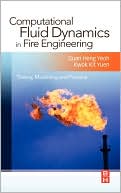

![Applied Fluid Mechanics [With CDROM] Applied Fluid Mechanics [With CDROM]](/application/data/covers/68/08/9780131146808.jpg)
